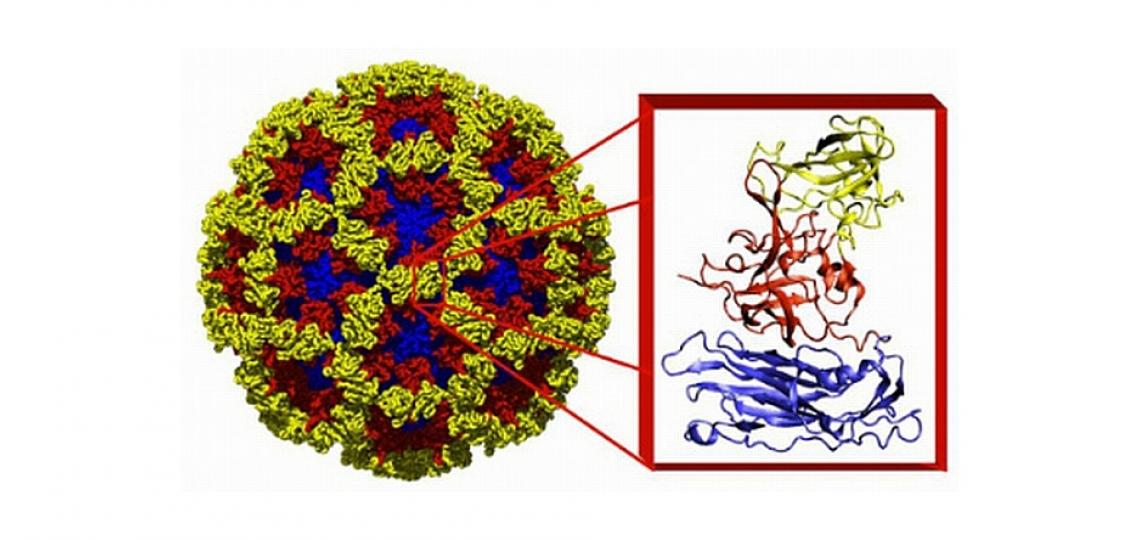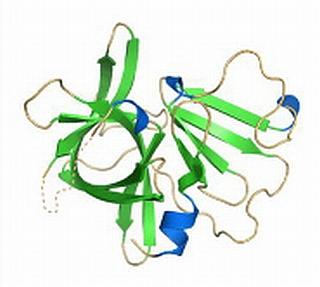The Agent
Noroviruses are the most common cause of gastroenteritis in the United States. Gastroenteritis, an inflammation of the stomach and the small and large intestines, may be experienced as nausea, vomiting, diarrhea, and stomach cramps. Although norovirus infection is sometimes referred to as “stomach flu,” gastroenteritis is distinct from flu, a respiratory illness caused by influenza virus. Gastroenteritis can be caused by bacteria or by a variety of viruses, including noroviruses. It is usually not fatal, but the illness can be serious for infants and the elderly.
Norovirus infection can by caused by eating contaminated food, such as uncooked fruits and vegetables or shellfish (especially oysters), drinking contaminated water, or direct contact with someone who is infected with norovirus. Outbreaks often occur in closed or institutional settings, such as child care facilities, schools, nursing homes, dormitories, and cruise ships, because the virus is very contagious, and it spreads rapidly through these environments. Noroviruses are found in the stool or vomit of infected people and can spread through food that has been contaminated by infected handlers.
Noroviruses are classified as members of a category of viruses known as the Calicivirus family. The caliciviruses consist of four groups, of which the noroviruses are the most important human pathogen. Caliciviruses are single-stranded, positive-sense RNA viruses. The caliciviruses have been difficult to study due to their inability to grow in a cell culture system and the lack of a good animal model system.
Norwalk virus is the best known member of the noroviruses, and it has made headlines as the cause of outbreaks of gastrointestinal illness on cruise ships. Following a bout of “winter vomiting” at an elementary school in Norwalk, Ohio in 1968, Norwalk virus was the first of the noroviruses to be identified as the causative agent behind an outbreak of gastroenteritis. Norwalk virus is a small virus that consists of a single strand of RNA, which comprises the genetic material of the virus, surrounded by multiple copies of a single protein assembled into a protective coat that is called the capsid.
X-ray structure of the Norwalk virus capsid, with the inset showing details of the structure of the subunits.
The different colors represent different regions of the capsid protein.
The Problem
Noroviruses are thought to be responsible for close to 90% of epidemic, non-bacterial outbreaks of gastroenteritis around the world. In the United States alone, noroviruses are estimated to cause 21 million illnesses each year and contribute to some 70,000 hospitalizations and 800 deaths.
Caliciviruses, of which Norwalk virus and the other noroviruses are members, are classified as Category B priority pathogens. They are considered an emerging pathogen threat because they:
- Are very contagious and can be easily transmitted by water, food, aerosols, and by person-to-person spread
- Require only a very low dose to cause an infection
- Are highly stable in the environment
Large outbreaks of the disease could cause economic problems and potentially overwhelm the capabilities of public health, hospital, and military facilities. Furthermore, once a facility is contaminated, it is difficult and expensive to eliminate the virus.
There is currently no treatment for norovirus infection, other than rehydration therapy. Diagnosis is also difficult. There is no vaccine to prevent norovirus infection at this time, although MVM researchers have recently demonstrated the feasibility of providing protection against the virus and illness using an experimental vaccine.
The Research
The challenges in norovirus research are to develop models in which to study the viruses, to develop methods to more easily detect the viruses, and to develop ways to treat and prevent norovirus infection.
A major hindrance to norovirus research has been the lack of a system in which to grow the virus. Scientists like to have a cell culture system and a small animal model system in which they can study details of how viruses cause illness and use these systems to test antiviral agents. In a step to overcoming this obstacle, Drs. Mary Estes and Robert Atmar and members of their laboratories have developed a mammalian cell culture system in which Norwalk virus is able to replicate. The availability of this system makes it feasible to test antiviral agents in mammalian cells. In a further study, these researchers were able to demonstrate replication of Norwalk virus RNA that was originally isolated from Norwalk-infected human volunteers following transfer into a mammalian cell system.
Scientists would also like to have additional reagents which recognize noroviruses that would be useful in combating norovirus infections. A collaborative effort among members of MVM is underway to develop molecules, such as antibodies, peptides, and aptamers that specifically recognize noroviruses. These molecules will be explored as potential diagnostics and therapeutics to detect and prevent human norovirus infections. This project is being performed by Mary Estes, Timothy Palzkill, Yongcheng Song, Robert Atmar , and Dr. B.V. Venkataram Prasad .
Norovirus Structure
Drs. Prasad and Estes have been investigating the architecture of noroviruses. Knowing the structure of a virus and the components that make it up, especially the molecules of a virus necessary for its replication and the parts of a virus that interact with molecules in cells, helps scientists understand how the proteins function during the life cycle of the virus. Information about the structure of virus proteins is also extremely useful in designing specific antiviral agents and for vaccine development. Several years ago, Drs. Prasad and Estes obtained the X-ray structure of the Norwalk virus capsid, the outer protein coat of the virus that encloses the genetic material. Subsequently, these investigators have determined the structure of the Norwalk virus protease protein, a protein that is necessary for the processing of other viral proteins.
In addition to studying the structural details of the virus itself, it is also important to understand exactly how the virus interacts with its cellular targets. This type of investigation can yield valuable information as to how a virus enters cells and starts an infection. It has been known for some time that as much as 20 percent of the population is resistant to infection by Norwalk virus. Susceptibility to Norwalk virus infection was shown years ago by Drs. Estes, Atmar, and Anne Hutson to be associated with antigens that determine blood type. Using the technique of X-ray crystallography, Drs. Prasad and Estes and their colleagues examined the precise interaction between the Norwalk capsid protein and blood group antigens. The antigens for both blood types A and O were found to bind to the same surface-exposed site of the Norwalk virus capsid protein. The binding site is present on the originally identified Norwalk virus but not the form of the virus that is currently circulating on cruise ships. This finding gives the scientists clues as to how the norovirus family has evolved and how the viruses might continue to evolve. The detailed information they have obtained may also be useful in designing drugs to prevent norovirus infection by blocking this interaction.
Norovirus Vaccine
Of course, given that noroviruses are responsible for up to 1.1 million hospitalizations and 218,000 deaths annually in children in the developing world, and there is no specific treatment, and the ability to curtail outbreaks is limited, the development of a vaccine is desirable. Dr. Atmar, Dr. Estes, and their colleagues have conducted a “proof-of-concept” study using an experimental norovirus vaccine which demonstrated, for the first time in a clinical study, that it is possible to protect against norovirus infection and the illness it causes. For this study, investigators selected healthy adults who expressed a gene called FUT2 that is associated with susceptibility to Norwalk virus infection. These individuals received a vaccine consisting of Norwalk virus-like particles or a placebo control administered intranasally, and they were monitored for the production of antibodies against Norwalk virus. Several weeks after receiving the vaccine (or placebo), the participants were exposed to Norwalk virus and observed for symptoms of gastroenteritis. The researchers observed that 70% of vaccinees produced a Norwalk virus-specific antibody response. Compared with the placebo recipients, individuals receiving the vaccine were less likely to have illness or infection. Among those who did have illness, the overall severity was decreased, and the time to the onset of illness was delayed. While this is a promising start, there are a number of challenges related to the biologic characteristics of norovirus that must be overcome before a successful norovirus vaccine can be developed for widespread use.
For More Information
Glossary
Learn more about some of the technical terms found on this page by visiting our glossary of terms.








 Credit
Credit

